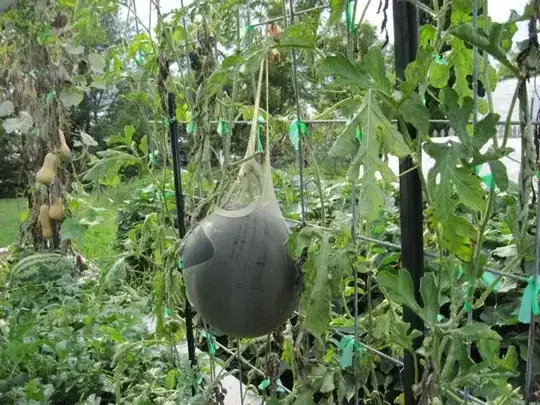I have used this method for 9 years using the same cattle fencing 16' x 50" with awesome results. So easy to train the vines. When hanging the the larger 20-30 lb melons I strip tie 1/4"d x 2"w x 60"L furring strips or 1/2 pvc cut to width above and below where the melons are falling, this prevents the melon from putting too much stress in one area and distributes the weight evenly across the panels width.
I also use T-shirts in place of stockings for the heavier melons and they work great. Similar to a hammock.
The smaller melons and cantaloupes don't require much preparation and I tie the ends of the stockings to the panel and cut a small hole in the center where I'll place the baby melons, this works great and prevents the stockings from tearing and allows plenty of room for the melon to expand.
Plus size stockings a must.
